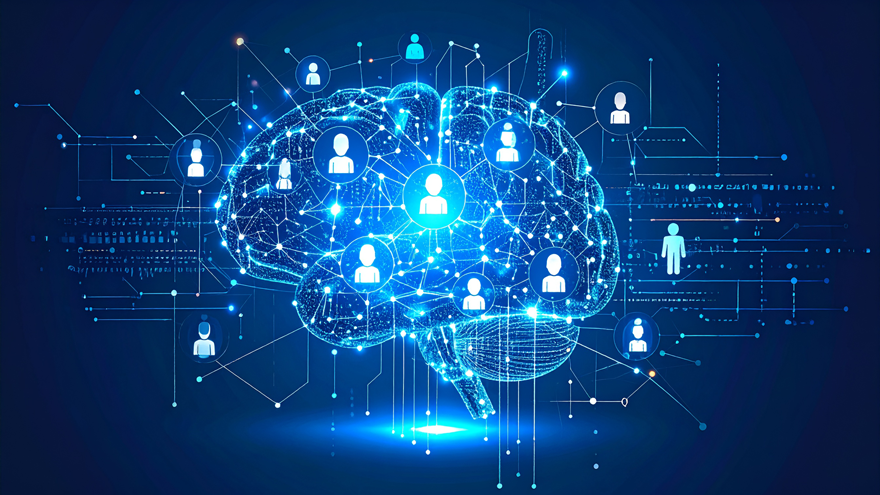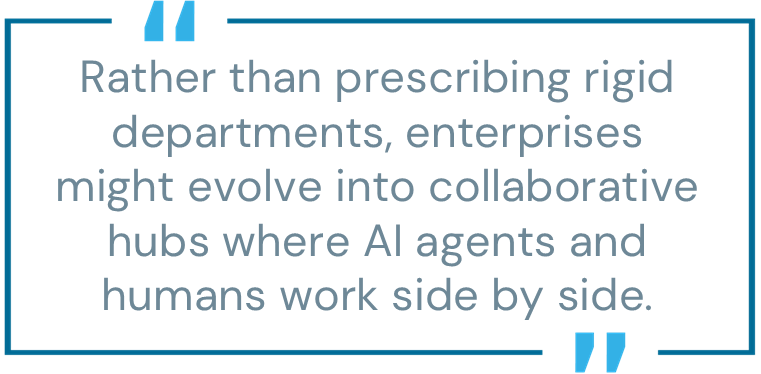How agentic AI could transform enterprise workflows: Insights from MIT GenAI Lab

The line between human and machine is blurring—and it’s not a question of whether machines can do more, but how far we’re willing to let them go. The frontier lies in tackling the chaos and solving the fragmented processes that slow enterprises: siloed rulebooks, scattered pricing spreadsheets, and manual approvals.
To explore how these challenges might be addressed in real-world enterprise settings, a student-led initiative in the MIT GenAI Lab—with support from CyberArk—set out to examine the potential of agentic AI in streamlining complex workflows.
Exploring agentic AI in the Enterprise: A case study from the MIT GenAI Lab
Grounded in this vision, the student team focused on a practical application: designing a conversational AI assistant to help unify and accelerate sales operations.
Working with CyberArk as the subject of their case study, the MIT GenAI Lab team built a proof-of-concept that explores how conversational AI can streamline sales workflows and surface insights in real time. This proof‑of‑concept demonstrates not only how well‑integrated AI agents could unlock thousands of seller hours each year, but also a fundamental shift in enterprise design — a future where teams of AI agents and humans co-create value, accelerate strategy execution, and rewire the operating model of the modern business.
As part of the project, the MIT students conducted thorough research and assessed CyberArk’s go-to-market (GTM) workflows, defined what an agentic system means in CyberArk’s context, and identified processes and use cases where AI workflows and agent interactions could bring more value.
This strategic analysis guided the selection of a conversational AI sales assistant as the pilot, and the students further built a prototype that simulates and integrates CyberArk’s internal sales processes into a single intelligent interface.
Inside the prototype: How the AI sales assistant works
Behind the scenes, the agent follows a reasoning workflow: it parses seller questions, selects the appropriate knowledge domain, retrieves relevant information from a semantic index, and applies business rules to generate a compliant answer.
The AI assistant combines vector‑based semantic retrieval with this agentic reasoning to interpret queries like “Which configurations meet this discount?” or “What approvals are required?” and instantly provides accurate, policy‑backed recommendations.
Quantifying the impact: time saved and value delivered
Early estimates show the prototype could save around 4,000 seller hours per year—approximately $325,000 in productivity gains—by automating eligibility checks and delivering contextual guidance. More importantly, the proof of concept shows that a single, well‑integrated AI assistant can save time and elevate human capacity to do what humans do best: think strategically and build trusted relationships.
Of course, with great power comes great responsibility, and while AI adoption is accelerating at an unprecedented pace, security expertise is struggling to keep up. As a result, AI agents open new doors and new attack surfaces. Data leaks, manipulated outputs, or unauthorized access aren’t hypothetical—they’re inevitable without the right protections.
How agentic AI could reshape how organizations operate
Rather than prescribing rigid departments, enterprises might evolve into collaborative hubs where AI agents and humans work side by side. In this emerging model, agents handle routine tasks—like configuration checks, policy verifications, and data retrieval—while humans focus on creative problem-solving, customer engagement, and strategic planning. Early adopters might see these collaboration pods forming around shared objectives, with performance metrics both tracking human and AI agent contributions.

Taken together, here’s how an agentic AI future might take shape—reshaping how organizations are run:
1. Shifting roles and emerging skills in an agentic workplace
As agents handle routine workflows, new roles might emerge: agent operations managers overseeing a portfolio of AI agents, AI interaction designers to refine human‑agent dialogues, and governance specialists to define ethical and regulatory guardrails.
Rather than replacing jobs, agentic AI might augment many functions, freeing knowledge workers from routines to higher-impact work. However, success will rely on building “AI literacy,” critical thinking, and ethical awareness across the organization.
2. Budgeting for bots: treating (and paying) AI agents like team members
Once AI agents are integrated into core operations, finance teams will need to account for them as distinct cost centers—budgeting for compute, licensing, and maintenance—while also measuring “agent value” in hours saved or errors prevented. Forecasting “agent headcount” and ROI could become as routine as annual headcount planning for people.
Organizations that develop these financial frameworks early will better balance upfront AI investments with long‑term productivity and risk reduction.
3. Establishing accountability and trust through ethical oversight and governance
As AI agents take on decision-making roles, organizations must ensure transparency and fairness. When an AI agent makes a recommendation—like approving a discount—or flags a compliance issue, clear organizational accountability is essential. Explainability tools reveal why agents made certain decisions, and ethical impact assessments help ensure fairness and compliance. Cross‑functional ethics councils can guide responsible AI agent deployments, balancing innovation with trust and responsibility.
4. Securing the agentic enterprise: new risks, new rules
Machines that gain access to sensitive systems and data will become prime targets for attackers. Securing both human and machine identities—with real-time monitoring and strict access controls—will be critical to prevent AI agents from becoming liabilities instead of assets.
Why agentic AI is more than just a chatbot
Adopting agentic AI means more than adding a new chatbot—it requires a cultural and organizational transformation. Teams and processes evolve as humans and AI agents collaborate. Hierarchies give way to adaptable ecosystems, and governance becomes an ongoing, integrated practice.
Organizations that embrace this shift may unlock greater agility, innovation, and long-term competitive advantage.
Noga Shachar Schleyer is the director of AI Strategy and Acceleration at CyberArk. Chloe Fang is a GenAI Lab student and president of the Sloan AI Club at MIT.
Additional acknowledgment:
MIT GenAI Lab team: Chloe Fang, Heeje Cho, Jacob Berk, Grant Tesdahl
MIT GenAI Lab professors and mentors: John Horton, Michael Bakker, Tim Valicenti, Thomas Stephens
Disclaimer:
This project and article were conducted as a student learning project in the MIT GenAI Lab class, with support from CyberArk. It does not constitute an endorsement of any specific CyberArk work, product, or platform by MIT or MIT students. For more information, see MIT’s Use of Name Policy or contact MIT Sloan Media Relations.